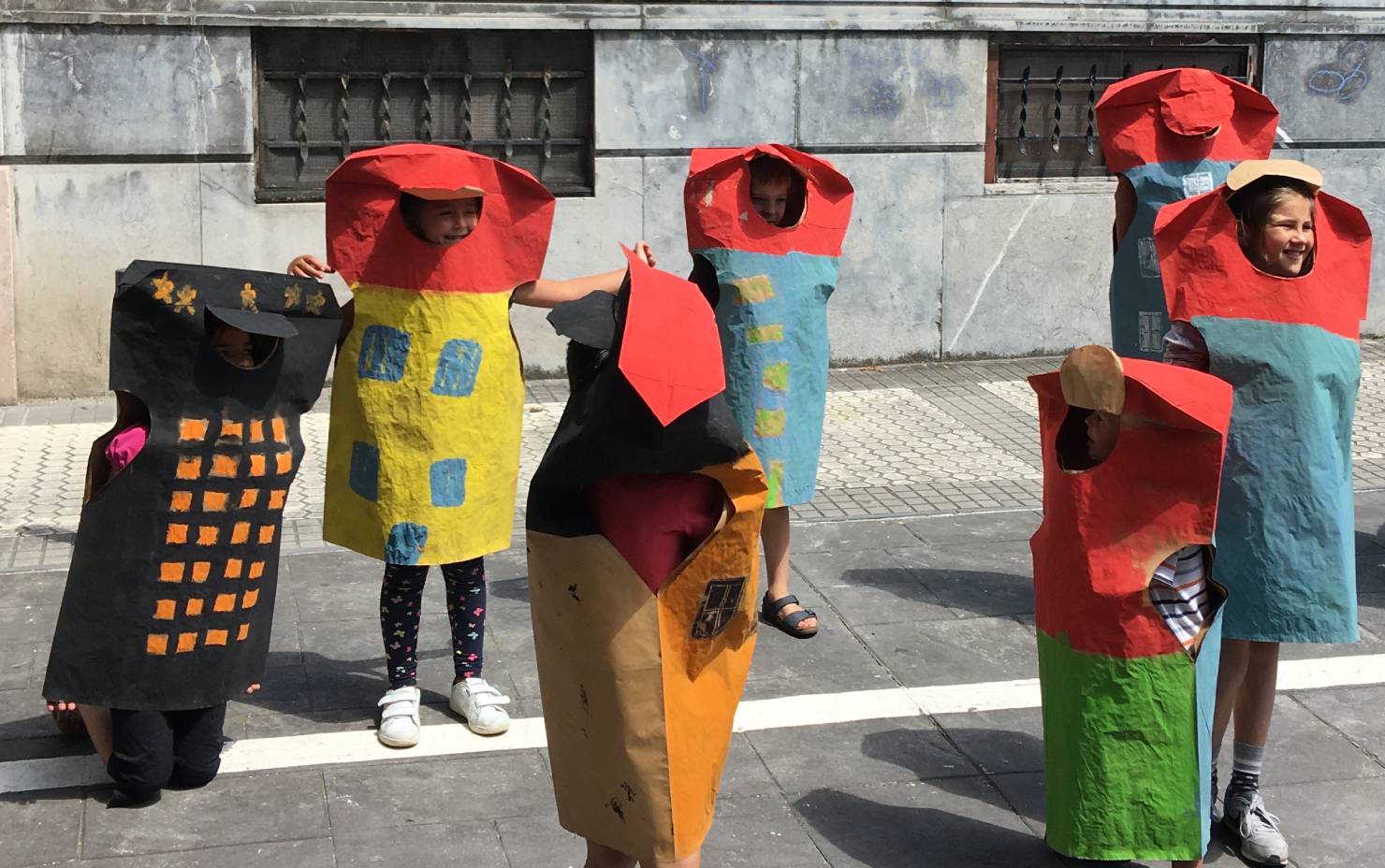
Architecture Lab III
Admission
€70 Members, €90 general public. Individual sessions (subject to availability): €7 Members, €9 general public.
Location
Library
More information
Duration: 90 min.
Ages: 6–11
Language: Spanish
In the third term of our Architecture Lab III, we will discuss urban networks, both visible and invisible; we will draw trees and build nests; we will learn to identify species of plants and birds in order to identify other inhabitants of our cities; we will focus on the senses through which we perceive architecture and its surroundings: the close relationship between sound and space, between touch and the texture of materials; we will take a look at the city through a magnifying glass for a detailed view of its flowers and insects; also, we will look at it from a distance to get an idea of its true size, as if in an impressionist painting. By the end of the term, we will become walking, thinking buildings in the city we would like to live in.
Conducted by: Maushaus
![]()
Fundación Crecer Juntos
Third term: from April 13 to June 15
April 13: Trees and Leaves
All the knowledge and wisdom we need to build a city can be found in nature. Trees can be considered the first natural buildings: many different species live in them. Since the dawn of time, human beings have used wood for their architectural feats. Trees grow by fractal branching, iteration by iteration. In so doing, they give us information about the seasons and shield us from heat and rain.
April 20: Nests
When we look at the common tailorbird and see how it builds its nest—sowing leaves together with plant fiber to make a cradle—we wonder whether it got this skill from humans or rather if it was the other way around. The dexterity and delicacy of some creatures when it comes to building a shelter for themselves show how much animals care for their families. Inspired by them, we will build our own nest-homes.
April 27: The Forms of Sound
If you are willing to listen, buildings will talk to you. They have a lot to tell you in terms of size, location, age, materials, purpose, and residents. The voice of a building, the way in which they express themselves, is essential to understand architecture. We can relate to space not only on the basis of light, touch, or temperature, but by means of sound as well. Close your eyes and listen carefully.
May 4: A Tactful Approach
Buildings can be appreciated by means of touch too. By feeling the texture, the roughness, the temperature, and the tectonics of materials, we can learn many things about the spaces we inhabit. We just need to close our eyes and touch. In this workshop, we will make a sample book to learn a lot of interesting things about the materials used in buildings.
May 11: I Spy with My Little Eye
Drawing with your eyes can be an interesting task. It means identifying forms and shapes before the first strokes reach the paper. This can be applied to contemplating architecture. Knowledge can enhance our understanding, as well as our drawing skills. In this lab, we will take an observational approach to architecture, resorting to different dynamics and representation techniques.
May 18: A Room with a View
City buildings shelter us. A great deal of what happens in our lives takes place in them. Looking out the windows, we can learn what is going on outside. Conversely, looking in from the street, we can imagine the stories unfolding inside, knowing that every home is a world. In this workshop, we will think and talk about city buildings, and the ways people have of living in them.
May 25: Walking Buildings
In this lab, we will create in a performative way an urban environment populated by colorful buildings. Playing a fun game with props, we will become walking buildings to think about cities and the relationship between them and the natural environment.
June 1: Urban Structures
Living in cities requires not only buildings, public spaces, or natural areas. We also need structures to communicate and get around. In this lab session, we will build connecting structures for the various spaces that make the urban layout.
June 8: Networks
Until recently, communication between people took place in the streets or in other physical spaces in the city. Today, we have “digital cities,” where we have other ways of connecting that cannot be seen, but are pretty much real. In this lab session, we will play games focusing on the city we live in as a maze of networks, with zillions of nodes, connections, and intersections.
June 15: Solving the Problem
In this workshop, we will try to find the solution to some of the problems faced by people in cities. Each of us will be an expert in a particular area of the urban world: construction noise, sidewalk flooding, picnic areas nearby, and so on.
Admission
€70 Members, €90 general public. Individual sessions (subject to availability): €7 Members, €9 general public.
Location
Library
More information
Duration: 90 min.
Ages: 6–11
Language: Spanish

